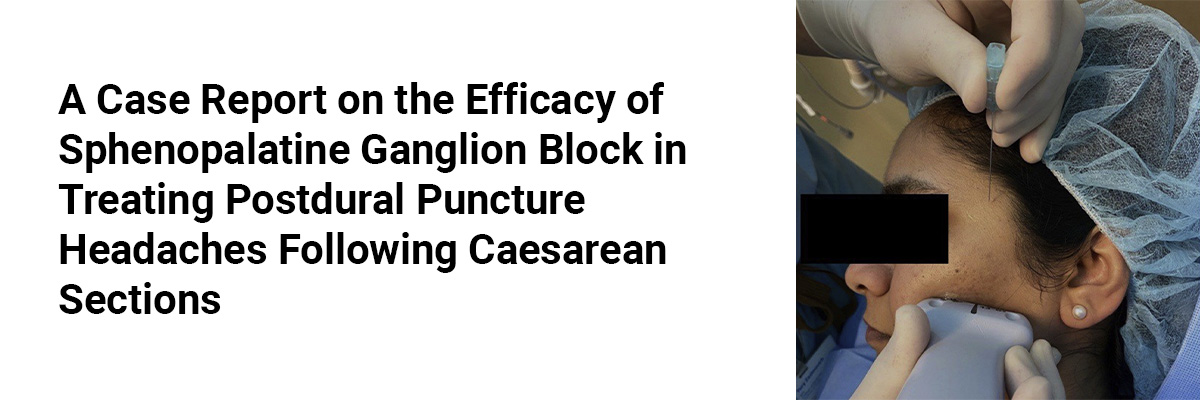
A case report on the efficacy of sphenopalatine ganglion block in treating postdural puncture headaches following caesarean sections
Although spinal anaesthesia is a commonly used anaesthetic technique during caesarean sections, it is correlated with the risk of postdural puncture headache (PDPH). Although PDPH can resolve spontaneously in most cases, conservative management, including bed rest, caffeine, analgesics and intravenous hydration has historically been tried as minimally invasive and/or low-risk therapy. Additionally, obstetricians often consult anaesthesiologists and/or pain management specialists regarding the possibility of performing an epidural blood patch (EBP) when they experience protracted postoperative PDPH that is not responsive to conservative therapy. However, the success rate following primary EBP ranges from 67% to 95%, and failure occurs in 28.3% of patients. While sphenopalatine ganglion block (SPGB) has been acknowledged as a traditional, minimally invasive, and successful treatment for refractory headaches and nonobstetric PDPH, there is no data on its effectiveness in treating PDPH after caesarean section.
The current case report aimed to describe the efficacy of SPGB in the treatment of PDPH after a cesarean section. A 37-year-old Japanese woman with a history of cesarean delivery was admitted for an emergency cesarean section at 33 weeks and 2 days of gestation. Spinal anesthesia was administered successfully, and the surgery proceeded without complications. Postoperatively on the second day, the patient developed a severe headache, characterized by worsening in an upright position and relief when lying down, along with pain radiating to her shoulder and neck. Despite conservative treatments, her pain remained high, with a numerical rating pain scale (NRS) score of 8 out of 10.
Her laboratory and neurological examination did not reveal any abnormal findings, tus, excluding the diagnosis of meningitis, cerebrovascular disease, and other causes of headache and shoulder pain. Despite of conservative management, including oral NSAIDs, oral hydration, and bed rest, the NRS score stayed unaffected.
On the fifth postoperative day, a diagnosis of PDPH was confirmed. The anesthesiology department then performed SPGB to alleviate her symptoms. The first block provided immediate relief, reducing her pain score significantly to 3 out of 10. Two additional blocks were performed on subsequent days, leading to complete resolution of her headache. She was discharged on the seventh postoperative day, and follow-up at two weeks showed no recurrence of headaches or complications.
Thus, the case report validated that SPGB is a less invasive, safer, and more useful treatment for PDPH in obstetric patients as compared to the conventional EBP.
Source: Hara MS, et al. Efficacy and potency of sphenopalatine ganglion block for the management of postdural puncture headaches in post-cesarean section: A case report and literature review. J Obstet Gynaecol Res. 2024 Oct 13. https://doi.org/10.1111/jog.16121








Please login to comment on this article